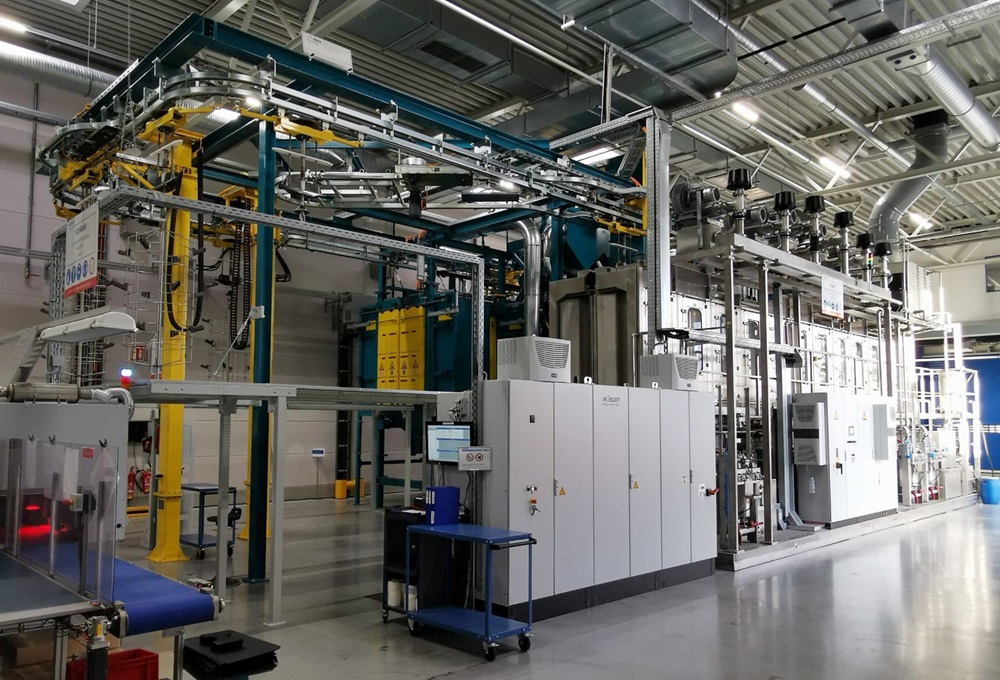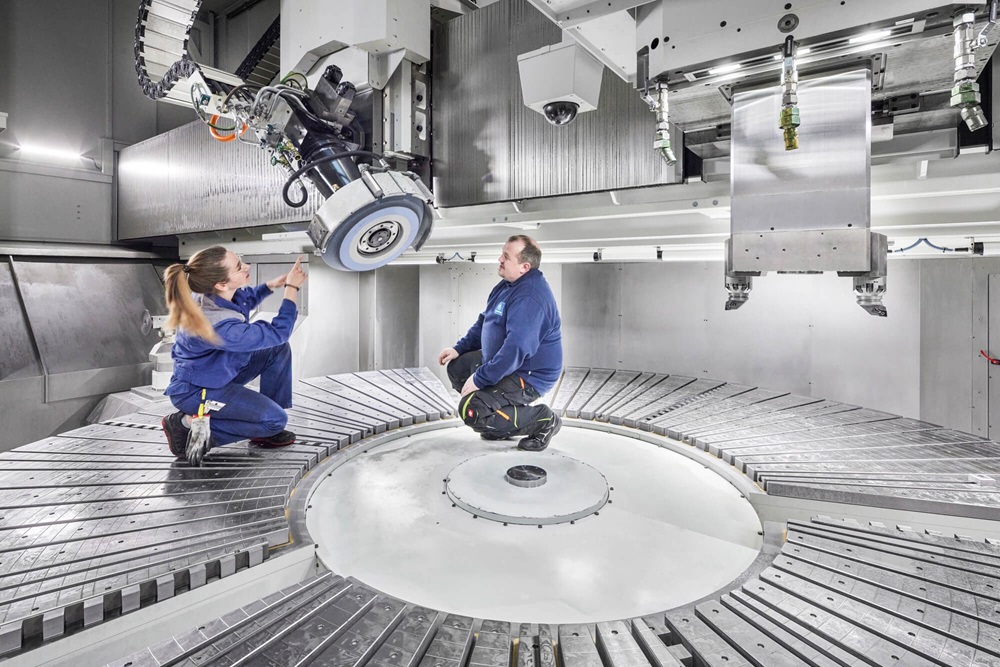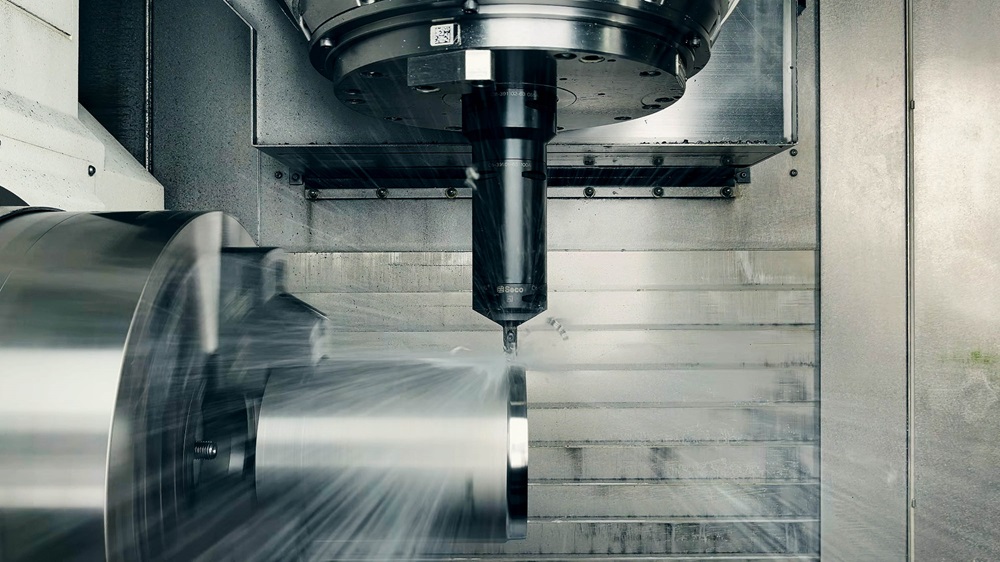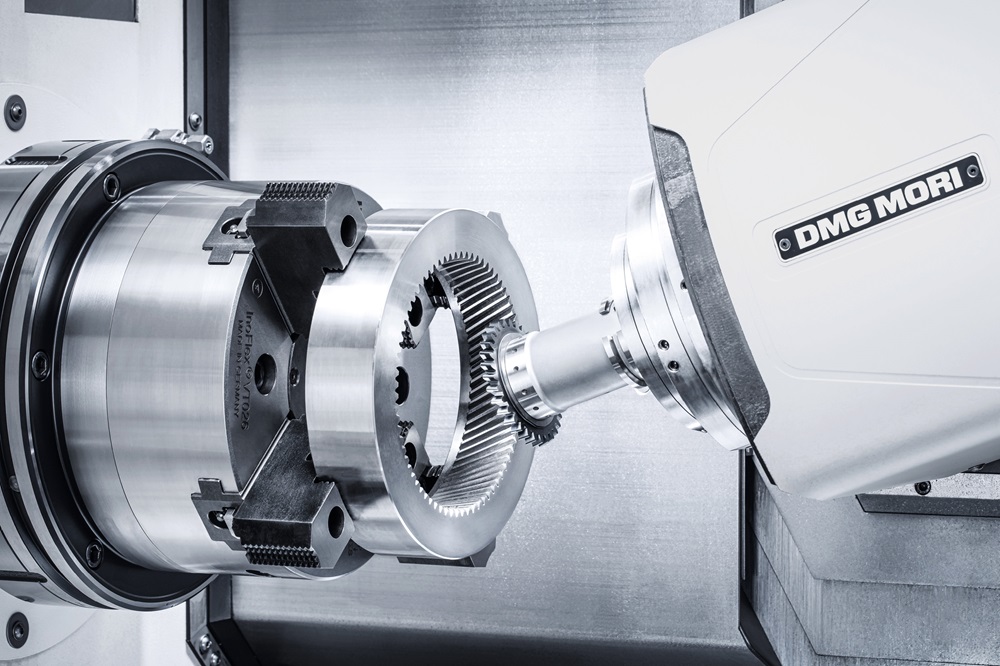Due to rapidly growing demand for electric vehicle (EV) components, Alupress AG, a Brixen, Italy-based manufacturer of aluminium and magnesium die-castings, recently had to increase its shot-blasting capacity. For this purpose, the company purchased a continuous feed spinner hanger blast machine, including a transport system, from Rösler. The custom-engineered equipment design guarantees effective but also gentle de-flashing of workpieces without any risk of warping.
To ensure gentle but fast and effective de-flashing in continuous flow, the Rösler feed spinner hanger shot-blast machine features eight special turbines, each with an installed power of 11 kW. The turbines contain extra-wide throwing blades generating a particularly broad blast pattern. Furthermore, contrary to the standard placement of turbines on one side of the blast chamber, turbines are located on both sides.
This duplex turbine placement, together with the broad blast pattern, generates a gentle blast operation, significantly minimising the risk of warping. Meanwhile, the comparatively high blast media throughput, needed for the efficient de-flashing and cleaning of light metal components, ensures fast and effective shot-blasting operations.
Another feature preventing part warping is the workpiece carrier, which not only rotates during the shot-blast process but also oscillates back and forth in three positions. This guarantees the safe removal of flashes and burrs, even in difficult-to-reach areas like undercuts.
Necessary maintenance work is facilitated by multiple connections for cleaning equipment at different sections of the shot-blast machine.
A handling system ensures easy and trouble-free transport of the workpieces. At the load/unload station, the height of the workpiece carrier is adjustable to the height of the respective operator.
More information www.rosler.com



















